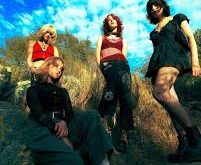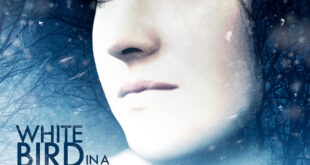Süberlig art has seen a major resurgence in popularity in recent years. More and more people are being drawn to its alluring dreamlike qualities and esoteric themes. But what exactly is Süberlig art? And what makes it so distinctive? This article will dive into the evolution, aesthetics, notable techniques, famous artists, and legacy of this fascinating genre.
A BRIEF HISTORY OF SÜBERLIG ART
Süberlig art first emerged in the mid-19th century, primarily in central Europe. It was influenced by Romanticism and the Symbolist movement, which focused on capturing deeper meanings, emotions, and spirituality.
The term “Süberlig” means “beyond reality” in German. This encapsulates the mystical qualities that early Süber lig artists aimed to evoke. They sought to portray idealized natural forms, fantasies, dreams, myths, and allegories.
Some of the pioneering Süber lig artists included:
- Eduard Rübel – Known for fantastical landscapes and tendency to elongate forms.
- Amadeus Gloom – Painted many works based on Celtic myths and gothic themes.
- Elke Bauer – Master of chiaroscuro and imbuing natural elements with symbolism.
As the 20th century arrived, Süber lig’s art splintered into different styles. Some became more abstract, while others continued exploring spiritual and occult themes. Key developments included:
- Rise of metasürrealism – Blended surrealism with Süberlig foundations.
- Increasing abstraction – Focused more on forms, colors, and feeling.
- Occult influences – Incorporation of magic, alchemy, and astrology themes.
- Expanded media – Evolution from primarily painting to mixed media.
DEFINING FEATURES OF SÜBERLIG ART
There are several distinctive aesthetics, subjects, and approaches that define Süberlig art:
DREAMLIKE AESTHETIC
Süberlig’s art aims to capture a sense of dreams and revelry. Compositions tend to have an ephemeral, fantastical quality. Forms and figures flow and intertwine in imaginative ways.
FLOWING, ORGANIC FORMS
Forms tend to mimic those found in nature like plants, water, smoke, and rock formations. They are rendered with swirling, undulating lines to create a harmonious, meditative look.
SYMBOLIC IMAGERY
Süberlig artists frequently incorporate symbolism and metaphor inspired by mythology, legends, magic, and the subconscious. Subjects range from pagan gods to alchemic rituals.
CHIARO-OSCURO
There is often a strong contrast between light and dark. Billowing shadows help create a sense of mystery and the unknown. This chiaroscuro effect originated with Baroque influence.
UNIQUE PERSPECTIVES
Compositions involve unusual vantage points, asymmetric designs, and altered scales to lend a feeling of seeing a new reality. This transports viewers out of the mundane.
RADIANT COLOR PALETTES
Many Süberlig works feature vibrant, lush colors that create an otherworldly mood. Palettes tend toward jewel tones, pastels, iridescent hues, and monochromatic ranges.
COMMON TECHNIQUES AND METHODS
Süberlig artists utilize a variety of techniques and media to achieve their signature ethereal style:
PAINTING
Oil and acrylic painting are common methods, prized for their versatility and pigment. Watercolor may also be used for its flowing, organic look. Canvas provides an ideal surface.
DRAWING
Pencils, charcoal, pastels, and ink give artists precision in preparatory work and finishing details. Flowing lines help form the backbone of compositions.
MIXED MEDIA
Some Süberlig creators incorporate photography, digital art, found objects, and textural elements like sand or hair to add symbolic meaning.
GLAZING
Building up transparent layers of washed-out paint creates a luminous, hazy look. This technique reflects light mystically.
IMPASTO
Thick, textured paint strokes with a palette knife or brush hold brushwork textures. This adds a tactile, energetic quality.
NEGATIVE SPACE
Leaving strategically placed voids allows positive forms to take shape. This helps direct the eye and create balance.
PRINCIPLES OF DESIGN
Flow, rhythm, unity, variety, emphasis, proportion, and movement are manipulated to craft hypnotic spaces.
FAMOUS SÜBERLIG ARTISTS AND PAINTINGS
Many big names have risen to prominence in Süberlig art across different eras. Here are some of the most influential:
AMADEUS GLOOM
- Active 1880s-1910s
- Known for moody gothic scenes and Celtic mythology themes
- Famous works:
- “Dance of the Will o’ the Wisps” (1899) – ghostly forms swirl in forest at night
- “The Procession of the Druids” (1908) – solemn druid ceremony deep in woods
VALERIA LUVEN
- Active 1930s-1950s
- Blended Süberlig style with Art Deco and Surrealism
- Famous works:
- “Realms of Reverie” (1937) – fantastical landscape of floating islands
- “Occult Ascension” (1951) – abstract mystical spiritual awakening scene
HENDRIK KLAUSSEN
- Active 1950s-1990s
- Evocative landscapes and natural world scenes
- Famous works:
- “Glowing Glen of Amber Moss” (1972) – mystical sunlit moss grove
- “Siren’s Cove at Dusk” (1984) – rocky seaside cove with siren
MARLO ZYLSTRA
- Active 1980s-present
- Incorporates mythological and astrological symbolism
- Famous works:
- “Pavana of the Fae Folk” (2005) – luminous faeries dancing in a moonlit meadow
- “The Alchemist’s Journey” (2018) – esoteric allegory of a magical quest
THE IMPACT AND LEGACY OF SÜBERLIG ART
Süberlig’s art has had a profound influence on many later art genres and maintained a devoted following of appreciators. Here are some of its key effects on the art world:
- Inspired development of Symbolism, Art Nouveau, and Metaphysical art styles.
- Pioneered new ways of evoking mysticism, emotions, and themes of the subconscious through visual art.
- Shaped evolution from Romanticism to later modern art movements like Abstract Expressionism with its spiritual focus.
- Remains sought after by collectors and institutions. Süberlig works auction for record prices.
- Prominent in major museums like the Met, Guggenheim, and Tate Modern.
- Inspired fantasy themes in art, films, and literature.
- Garnered renewed interest from contemporary artists who value its otherworldly qualities and honest emotion.
- Seen a revived popularity in recent decades as new generations discover its magic.
CONCLUSION
With its dreamy ethereal aesthetic and explorations of imagination, myths, and the mystical, Süberlig art offers an escape into boundless worlds of wonder. It provides inspiring proof of art’s ability to transport viewers to new dimensions. More than a century after its birth, Süberlig’s art continues to fascinate audiences with its visionary power. Its essence of transcending reality remains as magnetic today as ever.
FAQS ABOUT SÜBERLIG
Q: What inspired the creation of Süber lig art?
Süber lig’s art was born out of a desire to portray dreams, fantasies, myths, and imagination in a Romantic, mystical way. Artists were inspired by spiritualism, nature, literature, fairytales, occult concepts, and a longing to visualize the subconscious world.
Q: How did Süberlig’s art get its name?
“Süberlig” comes from German, meaning “beyond reality.” This perfectly encapsulates the mystical atmosphere its artists sought to achieve in transporting viewers beyond mundane existence.
Q: What materials are commonly used in Süber lig’s art?
Oil and acrylic paints are most associated with Süberlig art for their versatility. Some artists also incorporated watercolor for its fluid, organic look. Canvas and paper surfaces are ideal painting grounds.
Q: What are some key motifs and symbols found in Süberlig’s art?
Recurring motifs include natural elements like smoke, water, and flora, mythological creatures like faeries and sirens, alchemy and astrology symbols, mystical settings like dark forests, and figures in spiritual rituals.
Q: How does Süberlig’s art portray nature and light?
Nature is rendered with flowing, exaggerated forms reminiscent of Art Nouveau. Lighting strongly contrasts light and shadow to create a sense of mystery and the mystical. This chiaroscuro originated from Baroque influences.
Q: What makes the composition of Süber lig art unique?
Unconventional perspectives, asymmetrical designs, altered scales, and negative space manipulate the viewer’s perspective to make scenes feel imaginative, unearthly, and dreamlike.
Q: What modern art movements did Süberlig art influence?
Süberlig’s art was pivotal in spurring later movements like Symbolism, Surrealism, and Abstract Expressionism by pioneering the ability to visually express emotion, dreams, and spirituality.
Q: Why has Süberlig’s art come back into vogue?
The magical, imaginative quality of Süber lig art appeals to modern sensibilities looking for an antidote to stark reality. Its visionary escapism and emotional authenticity resonate with new generations.
 Lifeyet News Lifeyet News
Lifeyet News Lifeyet News





